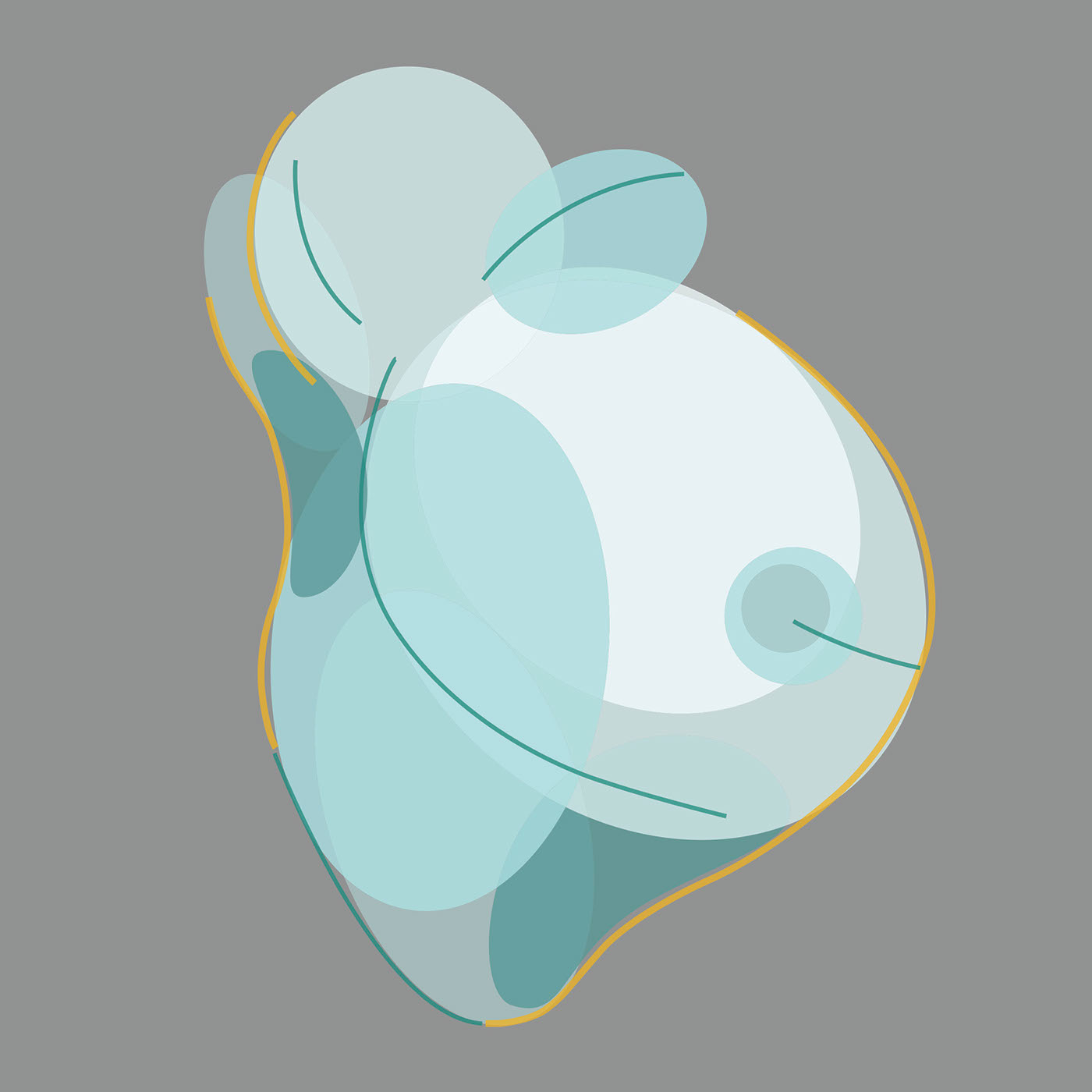Convexity
The goal of this exercise is to create a form using convex surfaces. In order to create a compelling form, different types of surfaces have to be used, and the proportions have to be varied. In order to create unity within the form it is crucial to pay attention to the surface transitions, so that each of them are connected instead of being several surfaces just randomly put together.
Before we started making clay sketches of the convex forms, we did an exercise to understand surfaces and how a curve is affected throughout different parts of the surface. A curve can be more subtle or more pronounced depending on where it is on a surface. The part of the surface where a curve is most pronounced is where the major and minor axes lie, and the farther away a curve is from the major and minor axes, the more subtle it will be. On these surfaces, the curves occur on both the major and minor axes so that if the surface is cut parallel to the major or minor axes, the curve happening on that point can be seen.

The three surfaces pictured above have different properties. From left to right, the nature of these curves are neutral, directional, and directional with speed. A neutral surface changes uniformly in both directions, a surface with direction shows a greater change in one direction than another, and a surface with speed changes significantly faster in one
direction compared to the other.
direction compared to the other.
These knowledge of surfaces are then utilized in creating several initial convex forms sketches. The final convex surface will incorporate these surfaces to create a unified form. To achieve this, not only the surfaces are important, but also the transition between them.

initial clay sketches

the surfaces are identified, including the major and minor axes, and the transitions between them are analyzed.

chosen clay sketch

analyzing of the form
This sketch model was chosen because it shows the most variation. As you go around the form a different part is revealed. It is also the most unified and each parts seems to be connected instead of simply coming out of the dominant surface. The chosen sketch is scaled up so that the transitions can be analyzed properly. At this stage, it is crucial to figure out the transitions between surfaces. Using a rake, the surfaces are smoothed out and all the extra materials removed so that the transitions can be figured out. After that, a 3D analysis of the major axes is made to help to move to the next step, which is carving out the plaster. A proposal for chiseling the plaster block is made to figure out where materials have to be taken out.

final model


